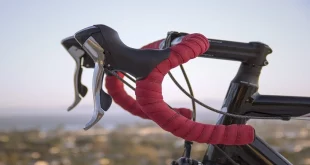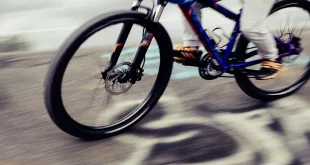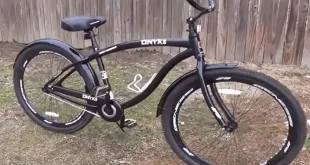Yes, you can put pegs on a mountain bike for certain types of riding, such as street or park riding. Adding pegs allows riders to perform tricks like grinds and stalls.
However, it’s important to note that not all mountain bikes are suitable for pegs, as they may not have the necessary frame and axle components to support them. Before installing pegs, it’s recommended to consult with a professional bike mechanic to ensure compatibility and safety.
Additionally, using pegs can affect the overall weight and handling of the bike, so it’s crucial to consider personal riding preferences and style when deciding to install them.
The Benefits Of Adding Pegs To Your Mountain Bike
Mountain biking is an exhilarating sport loved by many adventure seekers. But have you ever wondered if you can put pegs on a mountain bike? While pegs are commonly associated with bmx bikes, they can indeed be added to a mountain bike for an extra dose of fun and versatility.
In fact, adding pegs to your mountain bike can offer several benefits that you might find appealing. Let’s explore the advantages of adding pegs to your mountain bike under different subheadings:
Enhanced Stability And Control
- Improved grip: Pegs provide an additional contact point for your feet, allowing you to exert more control over your bike especially in challenging terrains.
- Better balance: By placing your feet on pegs, you can distribute your weight more evenly, enhancing stability and minimizing the risk of tipping over.
- Enhanced maneuverability: Pegs enable you to position your feet in a wider stance, which increases your ability to swiftly navigate tight turns and tricky obstacles.
Improved Maneuverability On Trails
- Greater agility: With pegs, you can easily shift your weight and adjust your body position, making it easier to negotiate tight corners, jumps, and drops.
- Improved cornering: By utilizing pegs, you can maintain a low center of gravity, allowing you to take corners with enhanced confidence and control.
- Enhanced trail flow: Pegs allow you to keep your pedals level when navigating rocky or uneven terrains, ensuring a smoother ride and reducing the risk of pedal strikes.
Increased Opportunities For Tricks And Stunts
- Additional footrest: Pegs provide a stable platform for performing various tricks, such as manuals, wheelies, and hops.
- Easy foot positioning: With pegs, you can easily position your feet for executing different stunts, enabling you to expand your repertoire of tricks and entertain your fellow riders.
- Versatility in terrain: Pegs on a mountain bike allow you to explore various off-road riding styles, including street riding, urban trials, and freestyle mountain biking.
Adding pegs to your mountain bike can undoubtedly enhance your overall riding experience. Whether you seek better stability and control, improved maneuverability on trails, or increased opportunities for tricks and stunts, pegs can offer that extra edge you’ve been looking for.
So why not give it a try and take your mountain biking journey to new heights of excitement and enjoyment? Strap on those pegs and let the adventures begin.
Choosing The Right Pegs For Your Mountain Bike
Mountain biking is an adrenaline-fueled adventure, and riders are constantly pushing the limits of what they can do on their bikes. One question that often arises is whether or not you can put pegs on a mountain bike. The short answer is yes, you can put pegs on a mountain bike, but there are a few important factors to consider before you do.
Let’s explore the key points to keep in mind when choosing the right pegs for your mountain bike.
Consider The Material: Aluminum, Steel, Or Composite?
- Aluminum pegs: Lightweight and durable, aluminum pegs are often favored by riders who value speed and agility. They provide a good balance between strength and weight, making them suitable for various styles of riding.
- Steel pegs: If you’re looking for maximum durability and strength, steel pegs are the way to go. While they may add a bit of weight to your bike, they can withstand heavy impacts and rough terrain, making them ideal for aggressive and freestyle riding.
- Composite pegs: Constructed from materials like nylon or fiberglass, composite pegs offer a unique combination of lightweight design and impact resistance. These pegs are a popular choice for riders who want to reduce weight without compromising too much on durability.
Sizing And Compatibility: Finding Pegs That Fit Your Bike
- Axle size: The first thing to consider when selecting pegs for your mountain bike is the axle size. Pegs come in various diameters, so it’s essential to choose ones that match the size of your bike’s axles. Most mountain bikes have either 3/8″ or 14mm axles, but it’s always best to double-check before purchasing.
- Frame and fork clearance: Different mountain bikes have varying amounts of clearance between the frame or fork and the wheels. Ensure that the pegs you choose won’t interfere with the bike’s frame or fork, as this can lead to accidents or damage.
- Threaded or non-threaded: Pegs come in both threaded and non-threaded options. Threaded pegs require your bike’s axles to have corresponding threading, while non-threaded pegs use adapters or washers to attach to the axles. Make sure to choose a type that is compatible with your bike’s axle system.
Weight And Durability: Balancing Performance And Longevity
- Weight considerations: Adding pegs to your mountain bike will increase its weight, which can affect your ride’s overall performance. If you prioritize maneuverability and speed, opt for lighter pegs. However, if durability and stability are more important, consider slightly heavier, more robust options.
- Riding style: Your riding style will also play a role in determining the ideal weight and durability of your pegs. If you’re a casual rider who mainly uses the pegs for occasional tricks or rests, lightweight pegs should suffice. On the other hand, if you perform intense stunts or tackle rugged trails, more substantial pegs will provide the necessary strength.
When it comes to pegs for mountain bikes, finding the right match involves considering the material, sizing and compatibility, as well as weight and durability. By choosing the pegs that align with your riding style and preferences, you can enhance your mountain biking experience without compromising on safety or performance.
So whether you’re looking to conquer new tricks or simply want a place to rest during your rides, don’t hesitate to explore the world of pegs for your mountain bike.
How To Install Pegs On Your Mountain Bike
Step 1: Gather The Necessary Tools
- Adjustable wrench
- Allen wrench set
Step 2: Remove The Existing Pedals
To install pegs on your mountain bike, the first step is to remove the existing pedals. This can be done by following these steps:
- Locate the pedal wrench flats on the crank arm
- Insert the appropriate size pedal wrench into the flats
- Turn the wrench counterclockwise to loosen and remove the pedal from the crank arm
Step 3: Install The Pegs
Once the existing pedals are removed, you can proceed to install the pegs on your mountain bike. Here’s how to do it:
- Take one peg at a time and line it up with the open hole in the crank arm
- Insert the peg into the hole and thread it in clockwise by hand until it is snug
- Use the adjustable wrench to further tighten the peg until it is secure
Step 4: Adjust And Secure The Pegs
After installing the pegs, it’s important to adjust and secure them properly for a safe and comfortable riding experience. Follow these steps:
- Stand next to your bike and position the pegs at your desired height and angle
- Use the allen wrench set to tighten the bolts on the pegs, ensuring they are firmly secured to the bike frame
- Test the pegs by putting weight on them and shaking the bike slightly to ensure they are sturdy
Installing pegs on your mountain bike can greatly enhance your riding experience by allowing you to perform tricks and stunts. By following these simple steps, you can easily install pegs and enjoy a new level of fun on your mountain bike.
Safety Tips For Riding With Pegs
Pegs on mountain bikes have become increasingly popular among riders who enjoy performing tricks and stunts. While some may question whether it is safe to attach pegs to a mountain bike, with the right precautions and understanding, pegs can be a great addition to enhance your riding experience.
However, it’s important to prioritize safety when riding with pegs. In this section, we will explore some essential safety tips to consider before attaching pegs to your mountain bike.
Start Slow And Practice In Controlled Environments
- Begin by acquainting yourself with the feel of the bike with pegs attached. Ride in a controlled environment, such as an empty parking lot or skate park, to gain confidence and improve your handling.
- Take time to get used to the added weight and altered balance. Practice basic maneuvers, such as turning, braking, and pedaling, to ensure you have full control of the bike before attempting more advanced tricks.
- Gradually progress to more challenging terrains and maneuvers once you feel comfortable and confident in your abilities with pegs. Remember, practice makes perfect, so take your time to build up your skills gradually.
Wear Appropriate Protective Gear
- When using pegs on a mountain bike, it’s crucial to prioritize safety by wearing the right protective gear. Always wear a properly fitted helmet to protect your head in case of any accidents.
- Consider wearing knee and elbow pads to safeguard your joints from impacts, as riding with pegs can increase the risk of falls and collisions.
- Additionally, invest in a pair of sturdy and durable bike gloves to protect your hands from abrasions and provide better grip on the handlebars.
Be Mindful Of Weight Distribution And Balance
- Attaching pegs to your mountain bike alters the weight distribution and balance, requiring you to adapt your riding style. Take the time to understand how the additional weight affects your bike’s stability and maneuverability.
- Ensure that you evenly distribute your weight while riding with pegs. Maintain a balanced posture on the bike, keeping your body centered and aligned with the bike’s frame.
- Practice controlling the bike’s balance while standing on the pegs to perform tricks. Gradually develop a sense of balance and adjust your body position accordingly to maintain stability.
By following these safety tips, you can enjoy the benefits of riding with pegs on your mountain bike while minimizing the risk of accidents or injuries. Remember to always prioritize safety and gradually push your limits as you become more comfortable and skilled with the pegs.
Maintaining And Caring For Your Pegs
Mountain biking is all about adventure and pushing the limits, and for some riders, that includes adding pegs to their mountain bikes. But can you really put pegs on a mountain bike? The answer is yes! Adding pegs to your mountain bike can open up a whole new world of tricks and stunts that you can perform.
However, it’s important to properly maintain and care for your pegs to ensure they stay in top condition. In this section, we’ll explore some key points on maintaining and caring for your pegs.
Regular Cleaning And Lubrication
- Cleaning your pegs regularly is essential to remove dirt, grime, and debris that can accumulate during rides. Use a mild detergent or bike-specific cleaner and a soft brush to gently scrub the pegs.
- After cleaning, make sure to dry the pegs thoroughly to prevent any moisture from causing rust or corrosion.
- Lubrication is crucial for smooth and efficient peg performance. Apply a few drops of bike-specific lubricant to the moving parts of your pegs, such as the axles and bearings, to reduce friction and ensure optimal functionality.
Check For Wear And Tear
- Regularly inspect your pegs for any signs of wear and tear. Look for cracks, dents, or bends in the pegs themselves and examine the axles and bearings for any looseness or damage.
- Pay attention to how your pegs feel while riding. If you notice any unusual vibrations, wobbling, or decreased stability, it may be a sign that your pegs need attention or replacement.
- It’s also important to check that the pegs are securely attached to your bike frame. Tighten any bolts or screws that may have become loose over time.
Replace Pegs When Necessary
- Like any bike component, pegs have a limited lifespan and will eventually wear out. If you notice significant damage or if your pegs have become unsafe to ride with, it’s time to replace them.
- Consider the type of riding you do and the intensity of your tricks when choosing new pegs. Opt for durable materials and designs that can withstand the demands of mountain biking.
- When replacing your pegs, ensure they are compatible with your bike’s frame and are properly installed. If you’re unsure, consult a professional bike mechanic for assistance.
By following these maintenance and care tips, you can enjoy the benefits of having pegs on your mountain bike for a long time. So, get out there, push your limits, and have a blast with your peg-equipped mountain bike.
Taking Your Mountain Biking Skills To The Next Level With Pegs
If you’re an avid mountain biker looking to take your skills up a notch, you might be wondering if it’s possible to put pegs on your mountain bike. While pegs are commonly associated with bmx bikes, they can also be used on mountain bikes to enhance your riding experience.
In this section, we’ll explore the world of pegs for mountain bikes and how they can help you progress in your mountain biking journey.
Learning Basic Peg Tricks
Adding pegs to your mountain bike opens up a whole new realm of possibilities when it comes to tricks and stunts. Here are some basic peg tricks that you can learn to improve your skills:
- Manual: Balancing on your rear wheel while using the pegs for stability.
- Grind: Utilizing the pegs to slide along a rail, ledge, or other surfaces.
- Stall: Pausing your bike mid-air or on an obstacle using the pegs.
- Footjam: Placing your foot in between the peg and the frame to execute various tricks.
- Bunnyhop: Utilizing the pegs to lift your bike off the ground for jumps and obstacles.
These tricks are a great starting point for beginners who are new to riding with pegs. They will help you develop balance, coordination, and bike control, allowing you to progress further in your mountain biking journey.
Progressing To Advanced Stunts And Techniques
Once you’ve mastered the basic peg tricks, you can move on to more advanced stunts and techniques. Here are some ideas to challenge yourself and push your limits:
- Tailwhip: A trick where you spin the bike frame 360 degrees while keeping the pegs in position.
- 180 barspin: Combining a 180-degree spin with a barspin, using the pegs for stability during the rotation.
- Manual to peg wheelie: Transitioning from a manual to a peg wheelie, showcasing your balance and control.
- Peg stall to tailwhip out: Combining a stall on the pegs with a tailwhip exit, adding flair to your riding.
These advanced stunts require a higher skill level and practice, but they are guaranteed to impress your fellow riders and elevate your mountain biking game.
Finding Inspiration From Professional Mountain Bikers
To further refine your skills and gain inspiration, look to professional mountain bikers who have mastered the art of riding with pegs. Watch their videos, follow their social media accounts, and attend their events to learn from the best. By observing their techniques and studying their style, you can incorporate their tricks into your own repertoire, continually challenging yourself and pushing your boundaries.
Remember, adding pegs to your mountain bike can enhance your riding experience by providing additional stability and opening up a whole new world of tricks and stunts. Whether you’re a beginner or an experienced rider, learning and mastering peg tricks will undoubtedly take your mountain biking skills to new heights.
So, grab a set of pegs, hit the trails, and enjoy the thrill of conquering new challenges on your mountain bike.
Frequently Asked Questions For Can You Put Pegs On A Mountain Bike?
Can You Put Pegs On A Mountain Bike?
Yes, you can put pegs on a mountain bike. However, it’s important to note that not all mountain bike frames are compatible with pegs. Make sure to check your bike’s frame and axle size before attempting to install pegs. Additionally, adding pegs may affect the performance and handling of your mountain bike, so ride cautiously.
What Are Pegs Used For On A Mountain Bike?
Pegs are typically used for performing tricks and stunts on a mountain bike. They provide a platform for riders to place their feet on, allowing them to perform tricks like grinds, stalls, and other freestyle maneuvers. However, it’s important to consider the compatibility of your mountain bike frame and the added weight of pegs before attempting tricks.
Are Pegs Necessary For Mountain Biking?
Pegs are not necessary for regular mountain biking, as they are primarily designed for performing tricks and stunts. If your intention is to ride trails, climb mountains, or enjoy off-road adventures, pegs may not be necessary. However, if you’re interested in freestyle riding or trick-oriented mountain biking, pegs can enhance your experience and allow for more versatility in your riding style.
Conclusion
Adding pegs to a mountain bike can enhance versatility and unlock new riding possibilities. Whether you’re looking to perform tricks, grind on rails, or simply add more fun to your rides, pegs can be a valuable addition to your bike setup.
However, it’s crucial to consider a few factors before installing pegs, such as bike compatibility, intended use, and personal skill level. It’s recommended to consult with a professional or experienced rider if you’re unsure about the process. Additionally, ensure that you select the appropriate pegs that are durable and built to withstand the demands of off-road terrain.
With careful consideration and proper installation, putting pegs on a mountain bike can be a fantastic way to explore new biking experiences and push your skills to new heights. So, go ahead, give it a try, and enjoy the thrilling world of pegging on your mountain bike.
 CommutingLife Explore The World On Two Wheels
CommutingLife Explore The World On Two Wheels





